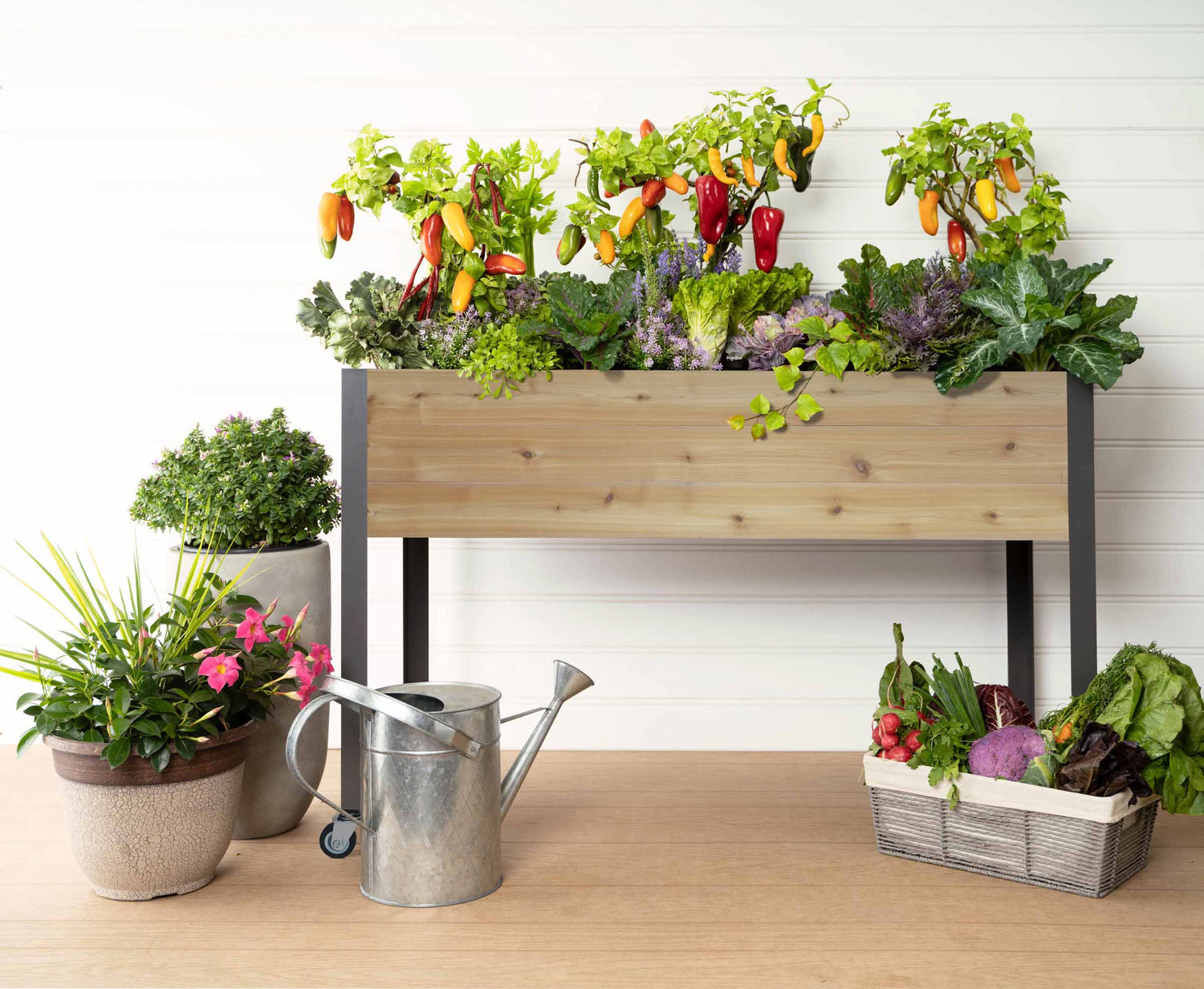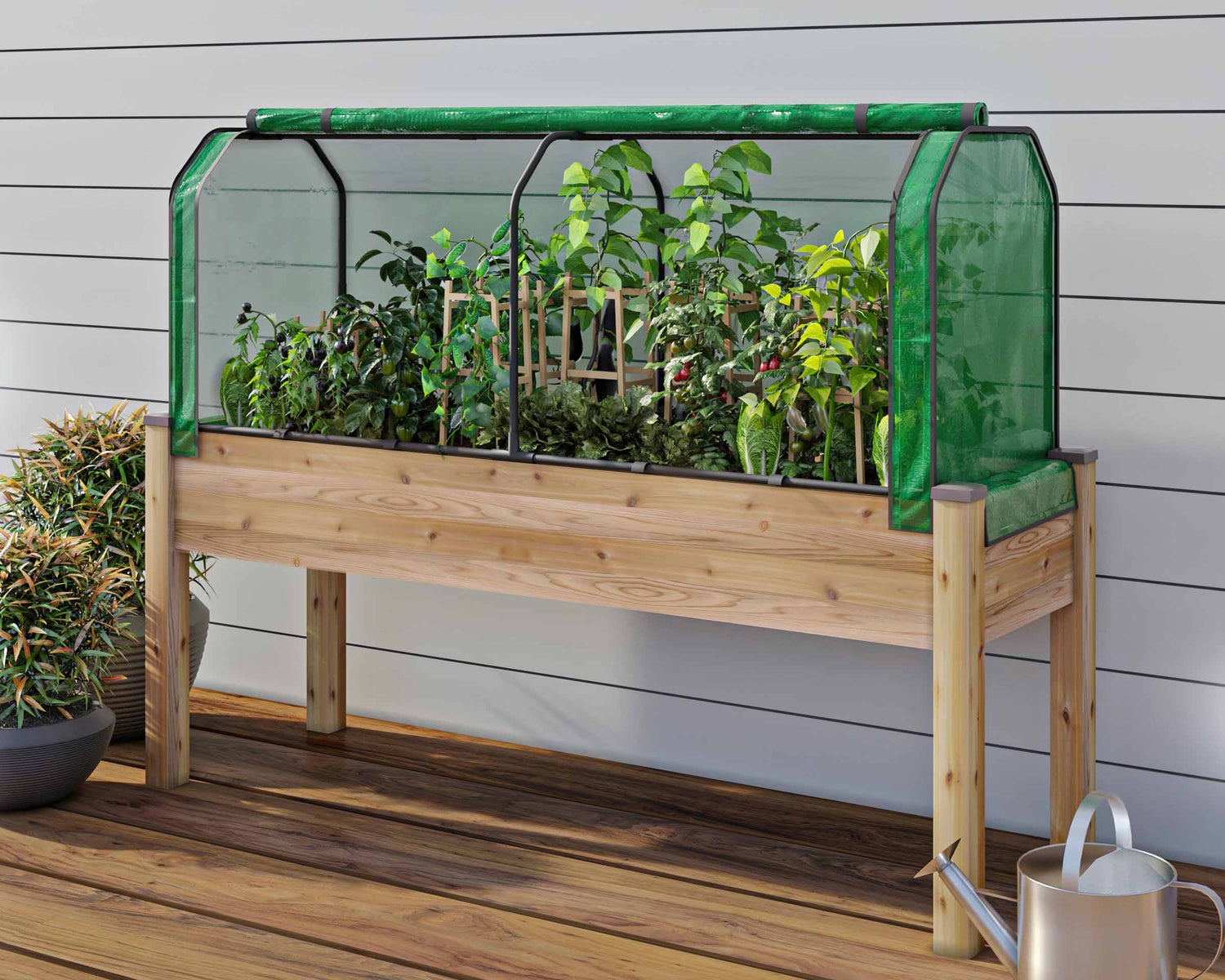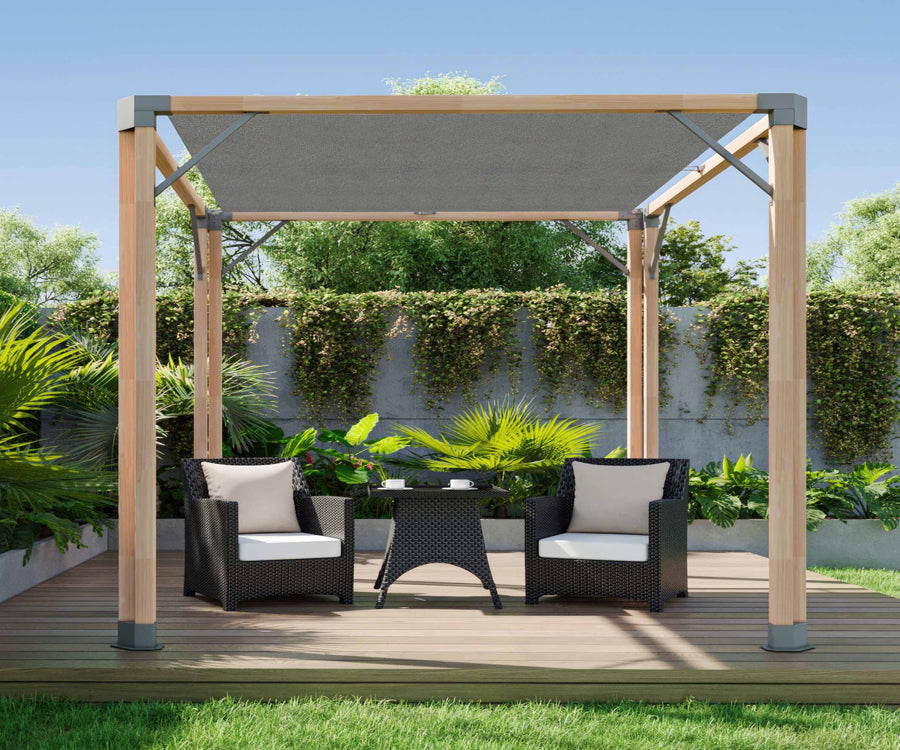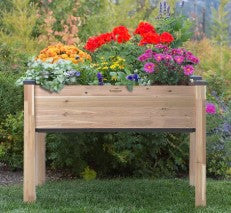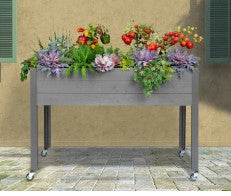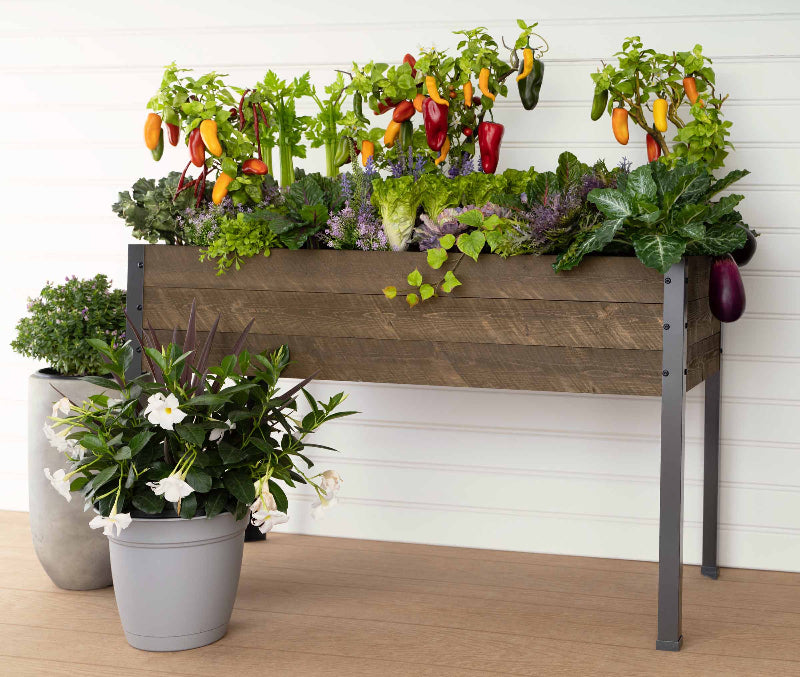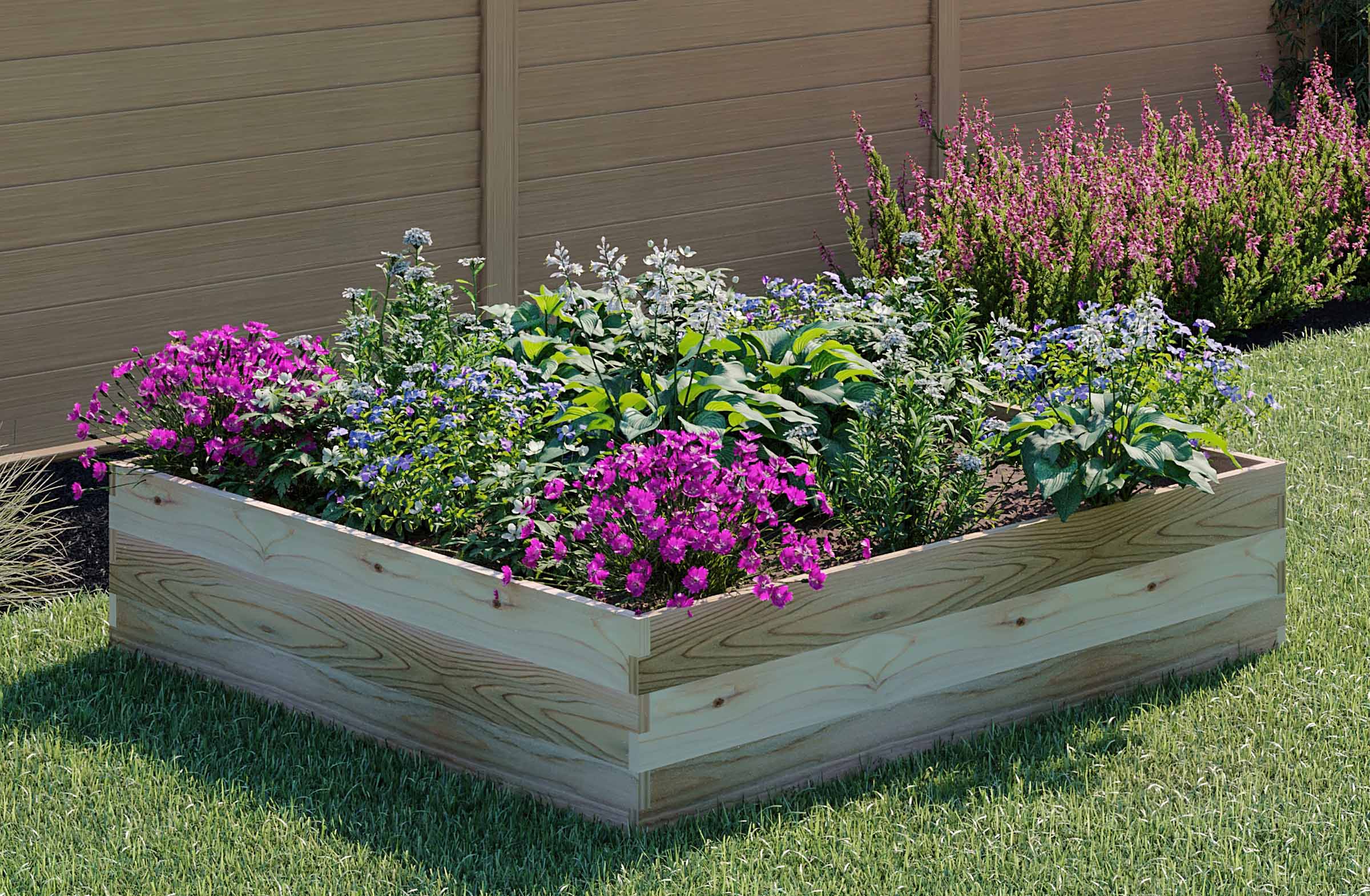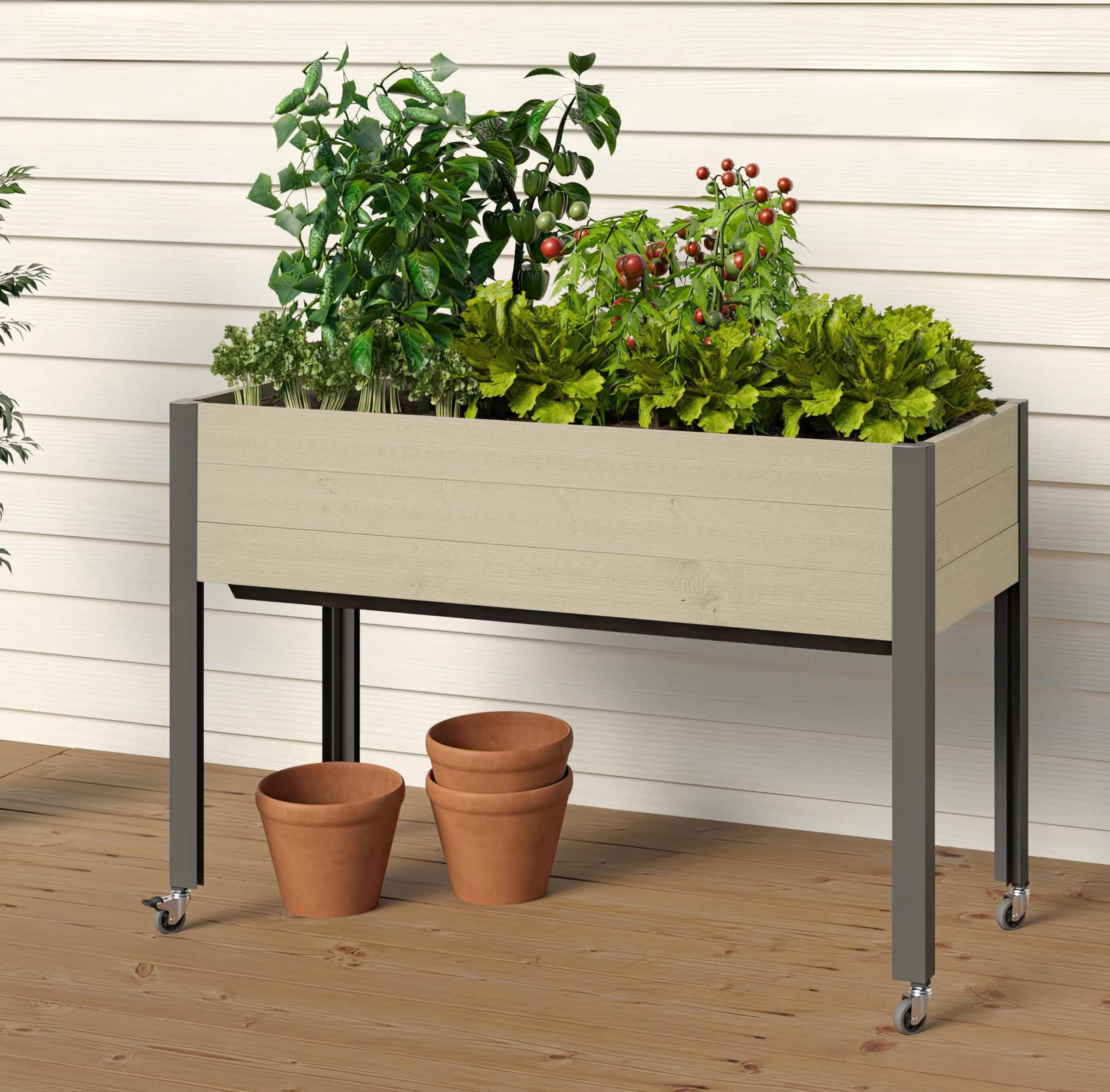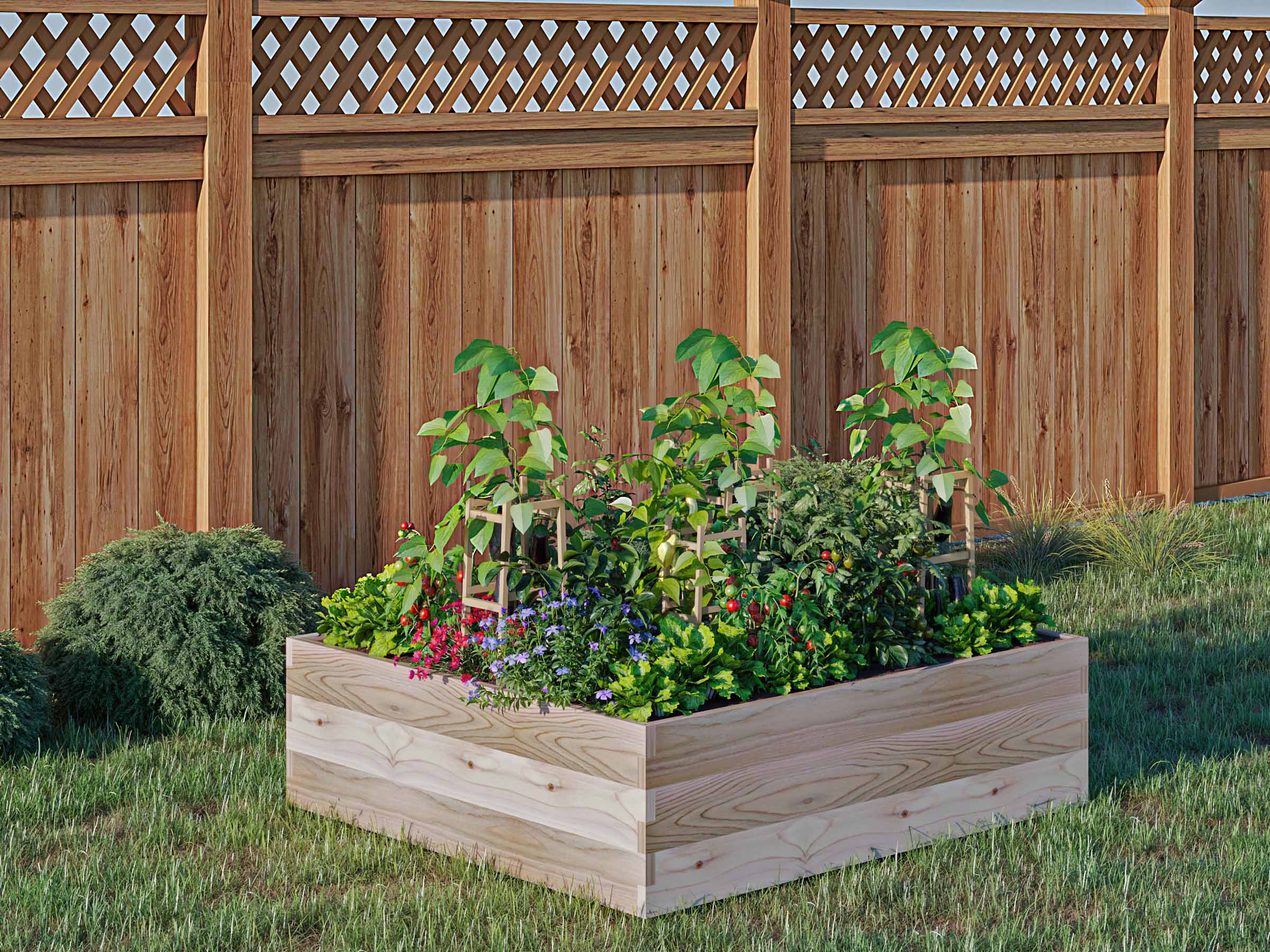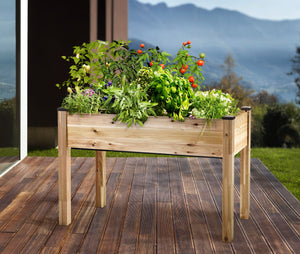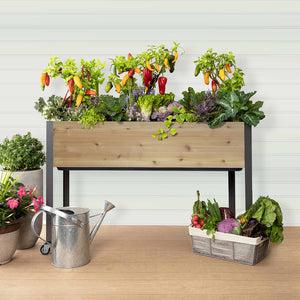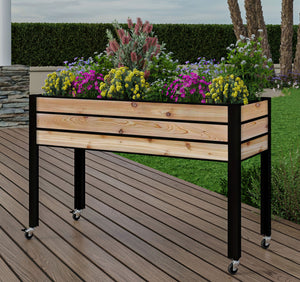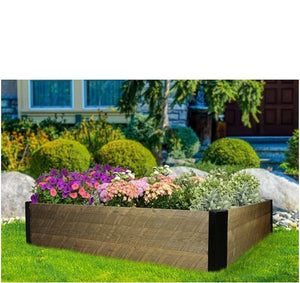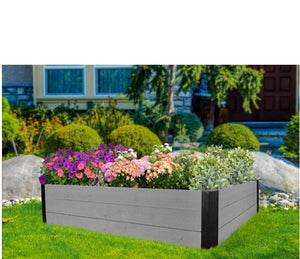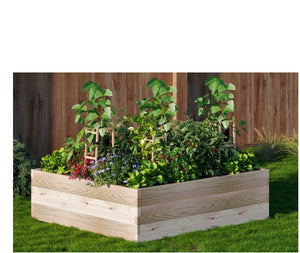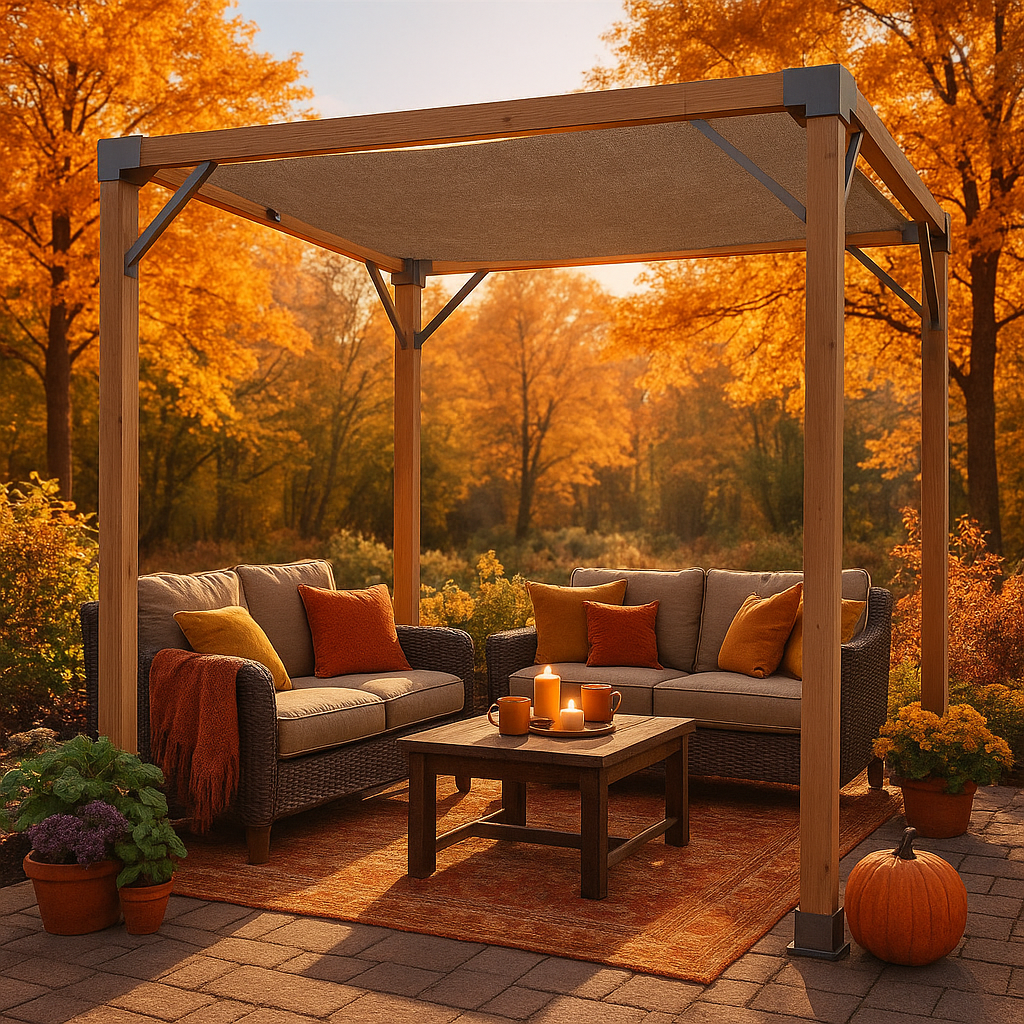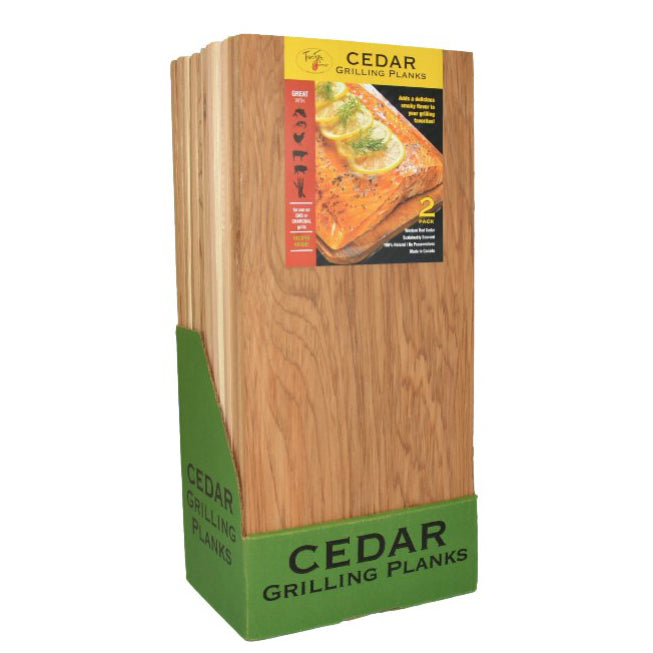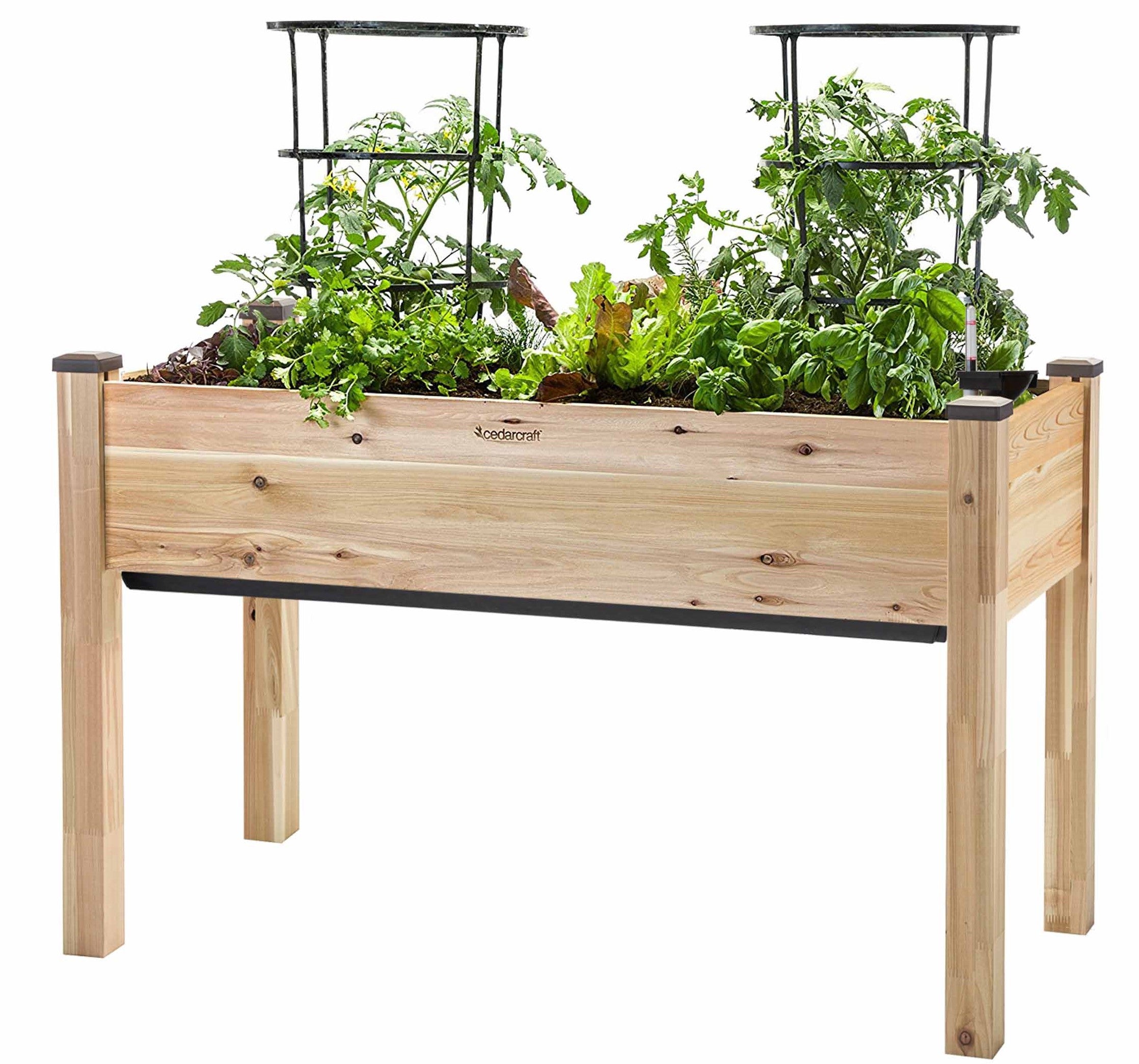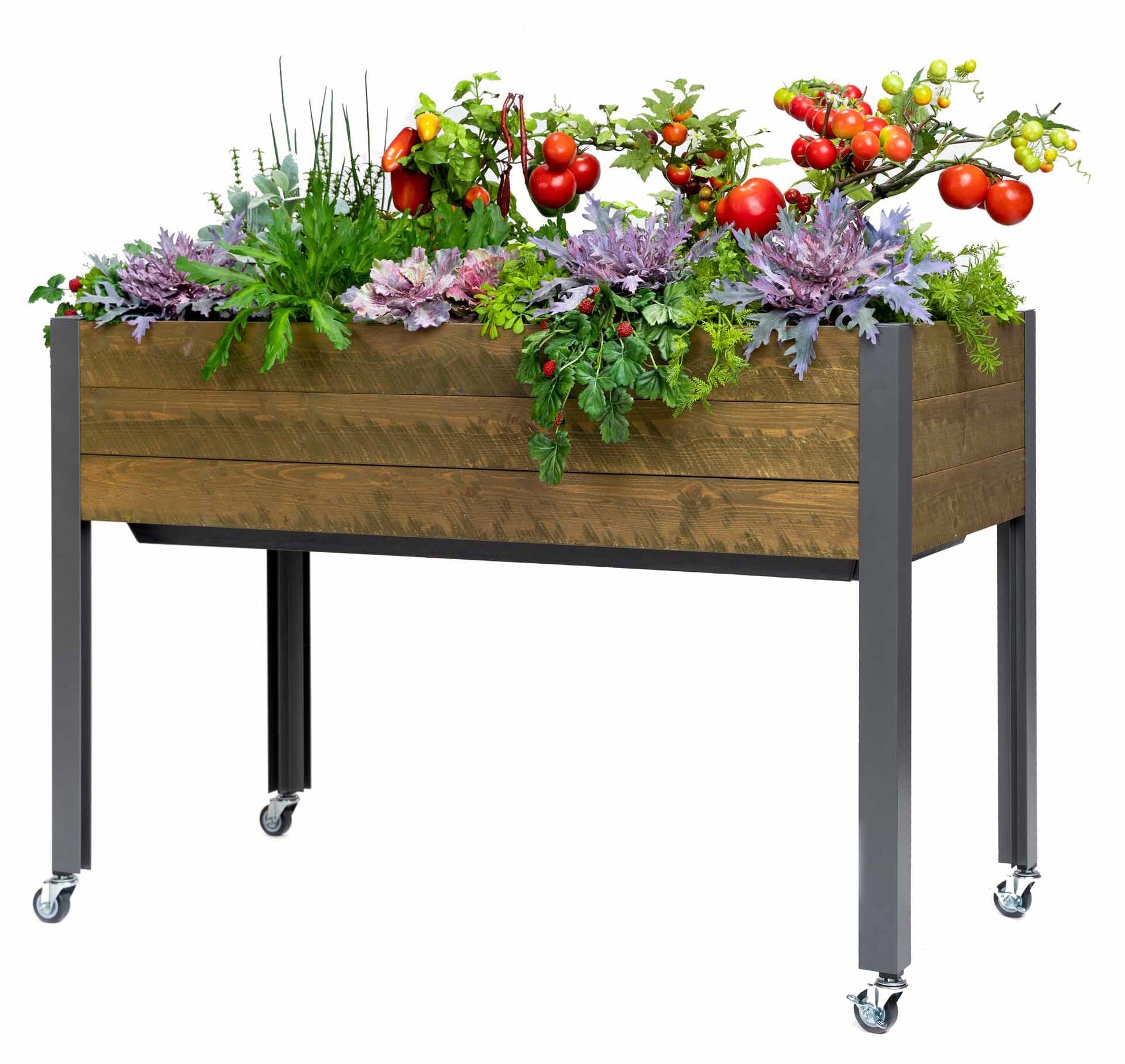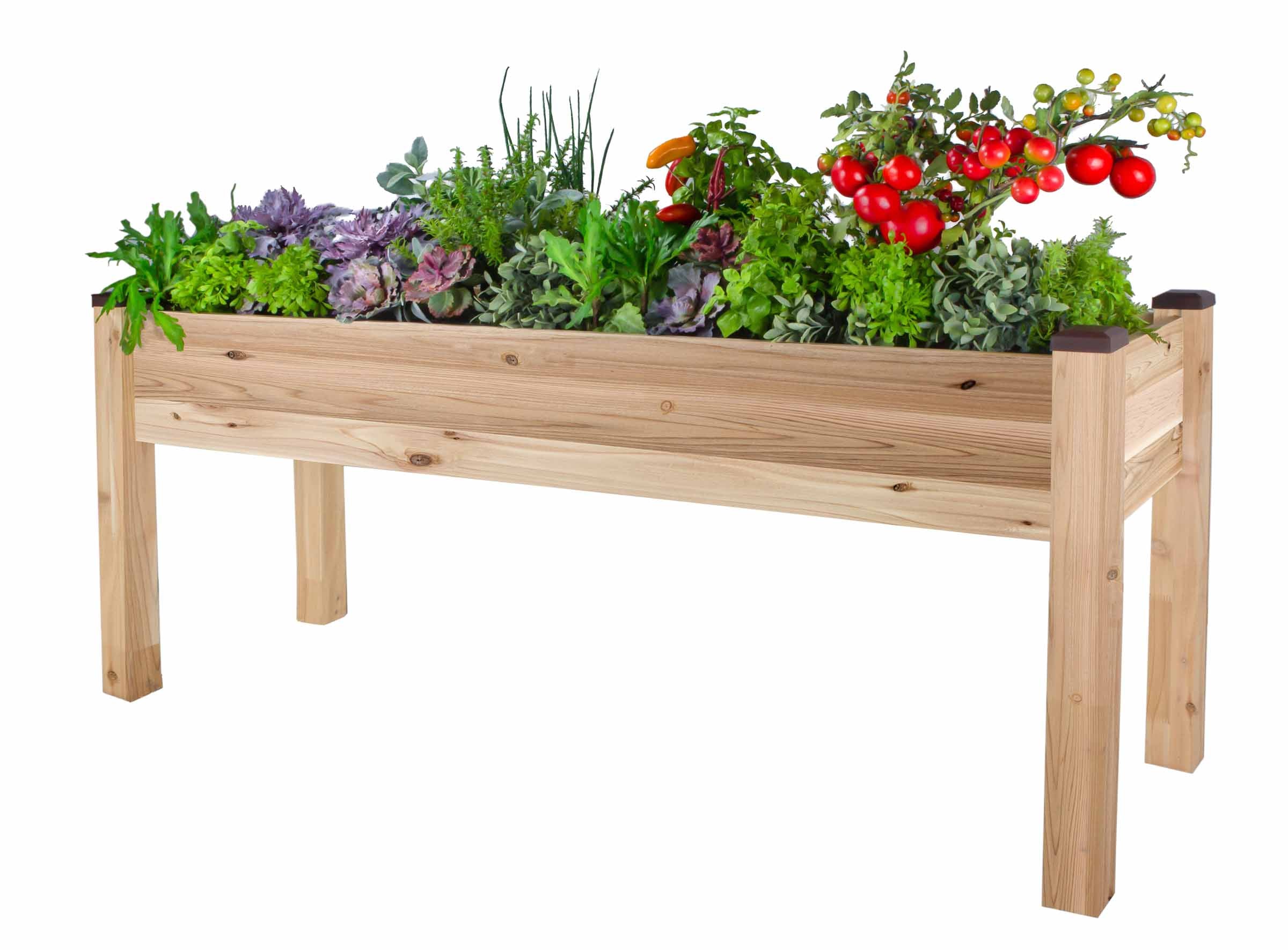
Bali Pergola
$599.99 + Free Delivery
Upgrade your backyard this Fall with the Bali 8x8’ Cedar Pergola
- Western Red Cedar
- Pre-cut wood for fast, easy setup
- Fabric canopy for cool, shaded comfort
- Powder-coated steel brackets & stainless hardware
- Open, modern design for outdoor spaces
- Made in Canada
Shop By Category
Sustainably Crafted for Outdoor Living
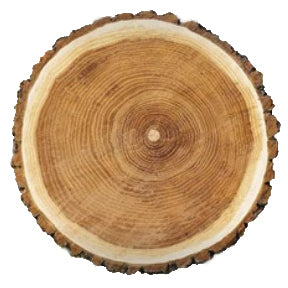
The Natural Choice
Wood is the natural choice for creating something beautiful and is 100%
renewable, recyclable & biodegradable.
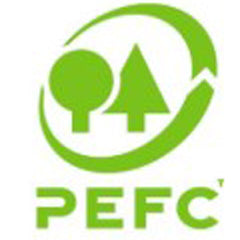
Responsible Sourcing
We use sustainably sourced wood that is PEFC certified (Programme for the Endorsement of Forest Certification).

Made in Canada
Our planters and pergolas are proudly manufactured in British Columbia, Canada

Sustainability
We've partnered with National Forest Foundation to help offset the carbon emissions associated with the delivery of our planters.
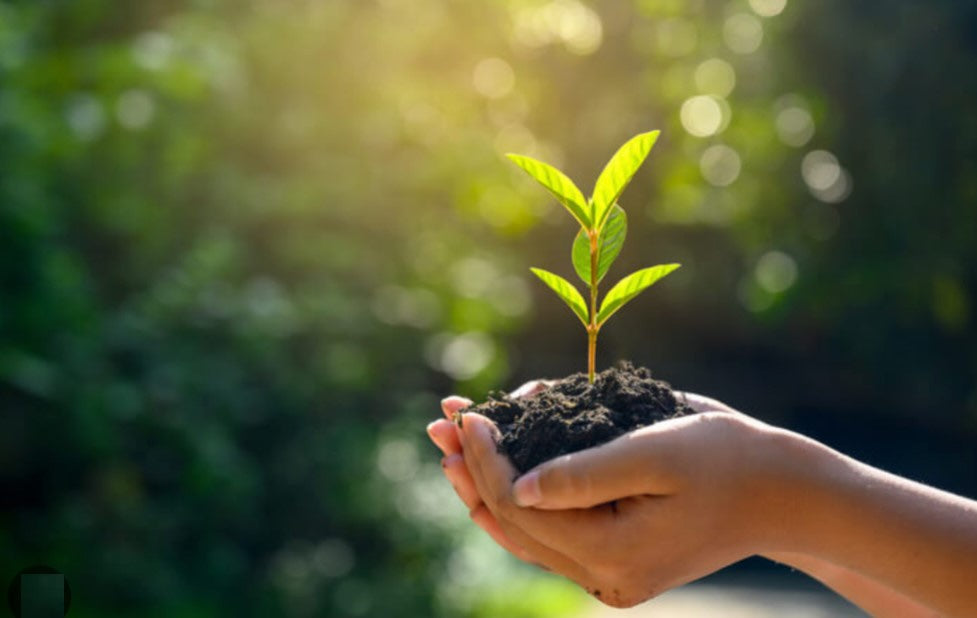
The CedarCraft Difference
Proudly made in Canada, CedarCraft designs outdoor products that bring together natural beauty and lasting quality. Thoughtfully made to enhance everyday moments outside—whether you're tending an elevated garden planter, grilling with friends, or relaxing in the shade under your pergola. Our products are made to help you enjoy the outdoors in comfort and style.
Gardening Adventures Blog
Holiday Gifts for Gardeners & BBQ Enthusiasts: Cedar Planks & Planters Now 35% Off CedarCraft
Discover heartfelt holiday gifts for gardeners, BBQ dads, and outdoor lovers — from DIY spice rubs and cedar grilling planks to premium CedarCraft planters and greenhouse covers. Plus, enjoy 35% off with code Holiday35
Learn moreWhen Frost Happens: A Real Gardener’s Guide to Surviving the Chill
Back in college in Ohio, I once walked out to my car and found it literally frozen shut — like a block of ice on wheels. I gave it one good tug, decided it wasn’t worth the frostbite, and went straight back to bed. Ahhh, college days — when you could just go back to bed without the kids missing school or you missing a meeting.So yes, I’ve seen real cold. The kind where you wear your shoulders around your ears just to stay warm. (When I lived in Colorado, my boyfriend used to walk behind me and gently push my shoulders down — I think he was afraid they’d stay there.)These days, though, I’m in Texas — land of the “is-it-fall-or-is-it-July” weather. We’ll have an 82° afternoon, and two days later, I’m out there covering my planters, expecting a scene from Frozen. Every year, without fail, my poor basil waves the white flag as soon as the thermometer dips below 40°F. But this year, I’m trying something new — building a DIY cover to see if I can extend the growing season through the next cold snap that’s headed our way. Because yes, it’s supposed to hit 32°F, and I’m not ready to say goodbye to fresh herbs just yet.If you live somewhere that gets cold but doesn’t stay cold — or you’re up north bracing for the deep freeze — understanding the difference between frost, freeze, and chill can help you decide when to panic, when to prep, and when to just pour another cup of cocoa.Frost vs. Freeze vs. Chill — What’s the Difference?It all sounds the same until your plants start drooping. Here’s the quick breakdown: Frost happens when moisture in the air freezes onto surfaces like leaves, grass, or car doors (trust me). It usually occurs on clear, still nights when the temperature dips close to freezing but not for long. Freeze means the actual air temperature drops below 32°F long enough for the cold to penetrate soil and plant tissue. That’s when cells burst and you get that sad, wilted look by morning. Chill is what we get here in Texas — temperatures that yo-yo between summer and shiver. Plants don’t get a chance to adjust, so they often suffer more from the swings than the cold itself. If you’re in colder regions like Ohio, Idaho, or New York, you get the full winter residency package — sustained freezes, frozen soil, and snow that sticks around. Down south or along the coast, like in Southern California, you might only see a real frost once a year. Still, that one night can do more damage than a week of steady cold.What Happens to Plants When It Gets ColdWhen temperatures drop suddenly, plant cells freeze from the inside out. Ice crystals expand, cell walls rupture, and when the sun hits them the next day, they collapse into sad, soggy heaps.It reminds me of when we lived in New York and planned a vacation to the Florida Keys. The airline called to say a storm was coming — we could either leave in three hours or wait four days. With two little kids (one and two years old), I wasn’t about to stay snowed in. Picture me running around packing for four people in thirty minutes. We made it, the trip was amazing, but… we left a case of seltzer in the car.When we got back from our sunny escape, the car looked like a fizzy explosion had gone off inside. Every can had burst, spraying sticky seltzer across the seats, the windows, the ceiling — everywhere. It had warmed up just enough to turn the mess into a syrupy disaster.That’s basically what happens to plant cells after a hard freeze — everything expands, cracks, and leaks. Messy, sticky, and not pretty.Some plants handle this better than others: Perennials: usually shrug off short cold snaps if they’re mulched and happy. Tropical plants and tender herbs (like my basil): can’t handle temps below 40°F — they droop fast. Leafy greens (kale, spinach, arugula): can survive light frosts. Root veggies (carrots, beets, garlic): pretty tough — they actually get sweeter with frost.DIY Covers That Actually Work (and Some That Don’t)When the forecast hints at frost, covering your plants helps trap the earth’s warmth and keeps frost from forming directly on leaves. But there’s a right way to do it. Here’s my go-to quick setup for raised beds or large planters: Grab four wooden stakes — about 4 feet tall — and stick one in each corner of your planter. Drape a frost cloth, old sheet, or lightweight fabric over the top. Make sure it extends all the way to the soil line — you’re creating a tent. Secure the edges with clips, bricks, or clothespins so the wind doesn’t undo your good intentions. Optional bonus: run a strand of old-fashioned (non-LED) Christmas lights underneath for gentle warmth. It’s not only practical — it’s downright magical. I did it in this picture, and my plants survived :) Or just do it the easy way: grab a greenhouse cover — CedarCraft’s fits perfectly over planters and takes the guesswork out of sudden cold snaps. If you don’t have time for any of that, get creative: Laundry baskets over smaller plants work in a pinch. Cardboard boxes can cover delicate herbs overnight. But avoid plastic touching the leaves — it traps moisture and can do more harm than good. And remember: uncover your plants once temps rise again. You’re protecting them from frost, not holding them hostage. A sunny morning under fabric can turn into a sauna fast.When to Save It, When to Let GoHere’s the tough-love section: sometimes you just have to let nature take the lead.If your plant’s leaves have turned black and mushy or the roots smell off, it’s time to compost and move on.Don’t beat yourself up — every gardener has lost a favorite plant to an unexpected cold snap. (I’m looking at you, basil.) Instead, think of it as part of the rhythm. Some seasons are for growing; some are for resting, planning, and trying again — maybe with sturdier setups for next time. “Plants — like people — can only handle so much drama. Sometimes they need a reset.”Wrap-Up: Be Ready for the Weather WhiplashCold weather doesn’t have to mean garden heartbreak. Check overnight lows, keep a few old sheets or a roll of frost cloth handy, and don’t underestimate how fast that first frost can sneak in.Whether you’re tending raised cedar planters or a backyard bed, a little preparation goes a long way toward keeping your plants thriving through every “gets cold but doesn’t stay cold” moment.And if you’ve ever used a laundry basket, a cardboard box, or your kid’s old blanket to save a plant — I’d love to hear it. Drop your best frost-hack stories in the comments below. Author Bio: Mischelle Raftery is the Backyard Hopeful — a writer, former chef, and reformed plant neglecter who’s survived both Texas heat and Ohio ice. She writes about real-life gardening with a cup of cocoa in hand and dirt under her nails.
Learn moreThinking About a Pergola? Fall Is the Time
Thinking About a Pergola? Fall Is the TimeIf you’ve been dreaming of adding a pergola, fall is honestly the best season to do it. The days are cooler, the bugs are fewer, and outdoor time finally feels like a reward again.Right now, the CedarCraft Bali Pergola — our signature 8x8 cedar design — is on fall special for just $599. It’s the perfect way to refresh your backyard before winter, and once it’s up, you’ll wonder how you ever did outdoor season without it.If you already own a Bali, this is your moment to give it a glow-up. After months of triple digits and mirage heat rising off the patio, we’ve finally hit that magic stretch where evenings are crisp, the air smells like cedar, and you can actually enjoy sitting outside again. Step 1: Build Warmth You Can Feel Think of your pergola as a blank canvas for comfort. Start with layers that last through chilly mornings and evening breezes. Add weather-resistant throws, thick outdoor cushions, and a small rug to anchor your space. For longevity, look for UV-rated fabrics — the fall sun can still fade cheap textiles in weeks.A few well-chosen textures — soft knits, woven accents, and the natural warmth of cedar — can make your Bali Pergola feel more like an outdoor living and dining room than a simple patio cover. This is the kind of space where conversations stretch out, and dinner turns into dessert without anyone checking the time. Step 2: Make the Light Work for YouGood lighting transforms your pergola from functional to inviting. The secret is layering light at different levels to create warmth and depth.Run Edison-style LED string lights (like Brightech Ambience Pro) across the Bali Pergola’s crossbeams to highlight the wood grain. Add solar lanterns or clip-on sconces along the posts for soft side lighting, and use rechargeable LED candles or a small outdoor table lamp for close-up glow.Use clear zip ties or small cup hooks to attach the lights neatly — they stay secure without marking the cedar. The result is soft, layered illumination that makes your backyard feel like a destination, not just an afterthought. Step 3: Bring the Heat — Then Bring the Meal Cooler weather doesn’t mean retreating indoors. Fire up the grill, then bring your meal beneath the pergola’s canvas canopy to dine in comfort. Add a short propane heater or a small freestanding fire pit a few feet away for just enough warmth to extend your evenings.Set a simple table — cedar or neutral wood, a cloth napkin or two, and maybe a thermos of something warm or a bottle of Bordeaux. The Bali’s canvas top keeps stray leaves from landing on your dinner, while its cedar frame adds a subtle, woodsy scent that feels distinctly fall. Step 4: Keep the Color GoingYour summer herbs may be fading, but fall planters bring new personality. Combine ornamental kale, violas, and dwarf grasses in your CedarCraft Elevated Planters for color and texture that lasts. The natural cedar finish pairs beautifully with rich autumn tones and resists rot even in damp weather.Add a few pumpkins, pinecones, or dried branches around your pergola posts for a quick seasonal refresh. For more inspiration on plant pairings and container styles, explore this excellent 27 Plants for Gorgeous Fall Containers — it’s packed with ideas to keep your garden lively through the colder months. Step 5: Turn It into a HabitThe best pergola setups don’t just look beautiful — they draw you in. Make it part of your daily rhythm: morning coffee while the fog lifts, dinner outside before the time change, or a quiet evening with a blanket and a good playlist.Keep a basket of throws nearby, a few sturdy mugs ready to fill, and let your Bali Pergola become the reason you spend more time outdoors this season. With its cedar scent, canvas shade, and clean, open design, it’s the easiest way to make your backyard feel like home — even when the weather cools. Final Thought: Comfort Isn’t SeasonalWe wait all year for this. The air turns cooler, the light gets softer, and suddenly your backyard feels like the best room in the house.Whether you’re giving your pergola a fall upgrade or finally adding one to your space, the CedarCraft Bali Pergola turns any yard into a four-season retreat — a place to breathe, gather, and make the most of this perfect stretch of weather.So grab your blanket, set the table, and stay a while. After that summer? You’ve earned this. About Mischelle, the Backyard Hopeful Mischelle is a writer, former chef, and the proud survivor of many, many houseplant casualties. While most greenery in her care has met a leafy end, she’s found redemption in CedarCraft’s self-watering planters — where her herbs actually thrive. She loves warm weather, outdoor BBQs, and believes you don’t need to be an expert gardener to create something beautiful — just the right tools, a little sun, and a whole lot of hope.
Learn more
Why Customers Choose CedarCraft

Quality Products

Excellent Customer Support

Free Shipping



